Top 13 Low-Code Development Platforms

Digital revolution is a very critical factor when it comes to modern businesses. For a business to be successful, the business and IT must work together to ensure that the business is functioning faster than ever before. For this to happen, a powerful modern digitalized platform is needed. That is where Low code development software comes into play.
Low code platform is a game changer and allow the organization to fast-track the digital transformation journey. Low code development software makes it easier to create apps, whether in a business setting or during app development by coders. Low code development system reduces business operation cost by reducing the numbers of developers needed to build apps.
Likewise, the platforms increase business agility by getting rid of the complexity of building business apps. This ensures faster transformation and separates the business in a competitive market.
What are the Top Low-Code Development Platforms: G Suite, Google App Engine, OpenXava, Angular, Spring Boot, ManyWho, AgilePoint, Oracle Project Visual Code, WaveMaker, OutSystems, APPACTIV, Uniface, ColdFusion Builder are some of the Top Low-Code Development Platforms.
What are Low-Code Development Platforms?
Low-Code Development Platform is programs deployed by business to speed up the process through which the users create their own business apps and application software.
The low-code development platform provides drag and drop feature to the user that provides an initial way to develop the business applications they need. The intrinsic value of this functionality is that it eliminates the need of a developer, thus allowing the user involved in the workflow of the business to develop the apps.
Low code development platform includes visual modeling features that allow the user to create applications. The program makes use of intelligent automation that makes it easy to develop applications based on the template or model provided. Low-code development platforms are built for both professional and traditional coders. However, IT specialist may be required to provide programming assistance that is needed to achieve the required end results.
Low-code development platform provides an easy and user-friendly environment from construction to the deployment of the applications. Some of the features that are usually found in low-code development platforms include:
- Visual modeling tools: Low code platforms allow the use of visual modeling, rather than written codes which are easier to use. This simply means that a lower amount of coding is needed and allows the user to grasp the application design easily.
- Drag and drop functionality: Developing using Low code platform is easy as it allows the user drag and drops ready-made components such as templates which accelerate and make development easier.
- App lifecycle support: Low code allow fast development of applications, easy deployment of the app and can be streamlined with the updates that align with business changes.
- Mobility: Low code platforms can be used across various platforms. The platform allows the user to build applications that can be viewed across various mobile devices such as smartphones and tablets. Creating these apps can happen easily without the use of a developer, coding or resources.
- Easy scalability: Low code provide security and a wide range of prototypes for easy scalability. With the necessary security certification, the programs are promising when it comes to large enterprises.
Top Low-Code Development Platforms
G Suite
G Suite includes Gmail business email, Docs word processing, Drive cloud storage, Calendar shareable calendars, Hangouts Meet video conferencing and other productivity and collaboration software. With G Suite, the organization can move faster together, using intelligent, cloud-based apps to collaborate from anywhere, in real time. Share files easily, collaborate quickly and unite employees across different locations. G Suite helps teams move forward faster and get more done every day. G Suite has been built from the ground up to mitigate the unique threats for cloud systems. Google’s standards for performance and reliability apply to businesses, schools and government institutions around…
• Hangouts Chat makes it easy for teams
• Analyze responses with automatic summaries
• Professional looking surveys
• Mobile device management
• Smarter chat with bots
• Schedule interviews quicker and easier with Google Calendar integration
• Basic - $5 / month / user
• Business - $10 / month / user
• Enterprise - $25 / month / user
Google App Engine
Google App Engine is a platform for building scalable web applications and mobile backends. App Engine provides you with built-in services and APIs such as NoSQL datastores, memcache, and a user authentication API, common to most applications. App Engine scales user’s application automatically in response to the amount of traffic it receives so they only pay for the resources they use. A user just needs to upload their code and Google will manage their app's availability. There are no servers for you they need to maintain.With built-in services such as load balancing, health checks, and application logging, a user can…
It builds apps
It scales automatically
It starts quickly
It builds faster
Automated security scanning
Contact for Pricing
OpenXava
OpenXava is a web framework for development of business applications. It contains options which allow easy and quick development of CRUD modules, generalizing reports, flexible real-life business applications like accounting packages, warehouse management, customer relationship and invoicing etc. OpenXava enables developers to define applications with POJOs, JPA and Java 5 annotations. Presently, OpenXava generates comprehensible Java web applications (Java EE) that can be deployed in any Java Portal Server (JSR168) as portlet applications. The developer defines instead of programming; this is its major function, and the framework automatically provides the user with options such as a good user interface, wide…
High productivity for developing business applications.
Short learning curve and easy to use.
Flexible enough to create sophisticated applications.
It's possible to insert custom functionality in any place.
Based on the concept of business component.
Generate a full Java EE application, including AJAX user interface.
Supports any application server (Tomcat, JBoss, WebSphere, etc.).
Supports JSR168: All OpenXava modules are standard portlets too.
EJB3 JPA complete support
It's tested with the portals: Jetspeed-2, WebSphere Portal, Liferay, eXo Platform and Stringbeans.
Easy integration of reports made with JasperReports (that use Jakarta Velocity and VTL - Velocity Template Language)
Licensed under GNU Lesser General Public License.
All labels and messages are in English, Spanish, German, Polish, Indonesian, French, Chinese, Italian and Catalan, with more coming.
Professional €399
Enterprise
€599
Angular
AngularJS is a complete JavaScript-based open-source front-end web application framework maintained by Google to develop single-page applications. The JavaScript components complement Apache Cordova (a framework used for developing cross-platform mobile apps). It simplifies both the development and testing of such applications by providing a framework for client-side model–view–controller (MVC) and model–view–viewmodel (MVVM) architectures, in addition to components commonly used in widely-used Internet applications. The AngularJS framework operates by first reading the HTML page, embedded with additional custom tag attributes. Angular’s job is to interpret those attributes as directives to bind input or output parts of the page to a model…
Mobile development – desktop development is much easier when mobile performance issues are handled first
Modularity – much core functionality has moved to modules, producing a lighter, faster core
Modern browsers only – reducing the need for browser compatibility workarounds
Angular 2 recommends the use of Microsoft's TypeScript language, which introduces the following improvements:
Class-based Object Oriented Programming
Static Typing
Generics
Lambdas
TypeScript is a superset of ECMAScript 6, and is backwards compatible with ECMAScript 5 (i.e.: JavaScript). Angular 2 also includes the benefits of ES6:
Iterators
For/Of loops
Python-style generators
Reflection
Improved dependency injection – bindings make it possible for dependencies to be named
Dynamic loading
Asynchronous template compilation
Simpler Routing
Diary.js logging – measures where time is spent, to identify bottlenecks[24]
Replacing controllers and $scope with components and directives – a component is a directive with a template
Reactive programming support using RxJS
Contact for Pricing
Spring Boot
Spring is a very popular Java-based framework for building web and enterprise applications. Unlike many other frameworks, which focus on only one area, Spring framework provides a wide verity of features addressing the modern business needs via its portfolio projects.Spring Boot makes it easy to create stand-alone, production-grade Spring based Applications that can "just run". Spring Boot take an opinionated view of the Spring platform and third-party libraries so user can get started with minimum fuss. Most Spring Boot applications need very little Spring configuration. Spring Boot does what exactly users are looking for. Spring Boot will do things automatically…
stand-alone Spring applications
Embed Tomcat, Jetty or Undertow directly (no need to deploy WAR files)
Provide opinionated 'starter' POMs
Automatically configure Spring
production-ready features such as metrics, health checks and externalized configuration
no code generation and no requirement for XML configuration
Contact for Pricing
ManyWho
ManyWho cloud platform makes it super easy to turn your business processes into engaging, responsive, social software applications. Drag-and-drop your business processes and simply draw your business processes as flow diagrams and we magically turn them into fully functioning software applications. ManyWho combine the best of collaboration with the best of business workflow to power your applications and work with your existing databases, social networks and content repositories to deliver a unified experience. The platform architecture of ManyWho is based on a simple approach: it defines the user’s workflow application using metadata instead of code and it’s all managed in…
• Flow Diagramming
• Collaborative Editing
• Dynamic Forms
• Responsive Forms
• Sharing
• Multi User
• Social Collaboration
• Location
• 100% Free To Start then starts from $15/user/month, Usage pricing from $995/month, Minimum spend of $400/month
AgilePoint
AgilePoint NX is an enterprise-class, low-code platform that lets the company visually develop eforms, workflows and business apps by easily incorporating existing systems and data and even adding the organization’s own custom code when necessary. AgilePoint is built by a team of driven people who relentlessly strive for innovation; AgilePoint NX is the vehicle of digital transformation for thousands of enterprises in twenty-eight countries and on every continent.AgilePoint works by systematically improving an organization’s internal processes via modeling, automating, measuring, and refining processes. It also empowers anyone in the organization to become an innovator by defining and implementing their own…
Extensive Extensibility
Unlimited Scalability
Single Code Base
Endless Integration
Great Value
Drag and Drop Interface
Multiple Platforms
Contact for Pricing
Oracle Project Visual Code
Oracle Project Visual Code is a complete cloud-based application platform used for low-code development. Using this innovative new platform, customers can quickly build and publish stand applications and even extend them by visually creating and publishing new integrated applications to meet any business need. To help democratize app development issues, Oracle has introduced Project Visual Code that enables business users to quickly and easily develop and extend enterprise applications. Project Visual Code brings with it an effective way for business users to innovate in cycle with IT; enabling the business users to extend and supplement off-the-shelf applications as well as…
Builder
UI Design System
UI Component Architecture
Business Objects
Application Marketplace
Contact for Pricing
WaveMaker
WaveMaker is a private aPaaS (application platform-as-a-service) software designed for the purpose of building and running custom apps. It provides Rapid API App Development & Deployment to quickly build enterprise-grade multi-device apps, along with leverages Docker containerization for an app-optimized infrastructure. Using this software, developers and business users get to work with standard enterprise-grade technologies for immediately creating apps. These apps can be easily extended or customized. They can also consume APIs, visualize data for insights and automatically support multi-device responsive interfaces. Something called the WaveMaker Enterprise enables organizations to deploy applications on public or private cloud infrastructure. Furthermore, WaveMaker…
Rapid app development using WYSIWYG drag and drop—plus the ability to edit generated code
Auto-responsive apps for web, tablet, and smartphone interfaces
Enterprise-standard technologies: Java, Hibernate, Spring, AngularJS, JQuery
Easy API integration and reusable API "Prefab" modules
Team collaboration capabilities including version control, shared projects, and activity feeds
Accessibility: An easy-to-use GUI portal and Docker-provided APIs and CLI
Manageability: Including software stack packaging, container provisioning, stack and app upgrading, replication, fault tolerance and more—all from the GUI console
Optimization: Autoscaling and elasticity, automatic hibernation and restarting of idle apps in milliseconds
Flexibility: Private deployment of aPaaS on-premises or dedicated cloud; ability to test and run apps behind the firewall
$99
PAID MONTHLY
OR $1089 ANNUALLY
OutSystems
OutSystems helps to develop and deploy apps in the cloud, on-premises or in a hybrid model. Develop once, for all devices. Integrate all existing systems and applications. Reuse the skills and resources. OutSystems offers a visual development environment to rapidly develop and change mobile and web applications. Developers can assemble all components necessary to completely define mobile and web apps, without writing any low-level code. user will be able to model User Interfaces, Business Logic, Business Processes, Databases, Integration Components, Web Services, Security Rules and Scheduling activities. One can find an integration SDK to quickly create custom components to integrate…
Unbeatable Speed
Integration With Everything
Great UX by Default
Low-code Without Constraints
Built-in Security
Massive Scalability
Unbreakable Deployment
Real-time performance dashboards
Contact for Pricing
APPACTIV
APPACTIV is an innovative business toolkit designed to build data driven applications and allows DIY customization. It thus enables users to meet their current and future data requirements, without having to make any changes in the overall source code. If the business is such that it requires complex financial budgeting, forecasting, planning and dynamic reporting to make impromptu and sudden decisions with real-time data, then APPACTIV is among the best CRM platform to opt for. As such, APPACTIV is easy to use, seamlessly aligns with the user’s business. Being a web based framework for building data driven applications, it has…
Code-free
Unrivalled Extensibility
Activity Management
Document Management
Service Management
Email Marketing.
Real-time reporting
Contact for Pricing
Uniface
Uniface is a platform built for development as well as deployment of enterprise applications purposefully built to run in a large range of runtime environments such as mobile, mainframe, web, Service-oriented architecture (SOA), Windows, Java EE and .NET etc. Uniface is a model-driven, Rapid Application Development (RAD) environment used to create mission-critical applications. Uniface provides a model-driven environment for the rapid application development of enterprise mission critical applications. Uniface is the development tool of choice for organizations that want to develop at a high level of abstraction and realize productivity unrivaled in the industry. Uniface is platform independent allowing applications…
Reliability
Productivity
Forms
Server Pages
Reports Services
Session Services
Entity Services
Contact for Pricing
ColdFusion Builder
ColdFusion Builder is Adobe's new IDE designed to deliver truly rapid application development using its ColdFusion server product. ColdFusion server product is the first IDE(Integrated Development Environment) dedicated specifically to ColdFusion. ColdFusion Builder is based on Eclipse, and not the previous tool. Therefore it works easily with Adobe Flash Builder and other Eclipse plugins. ColdFusion Builder is an Eclipse plugin, and like Flash Builder can be installed in one of two methods: standalone and plugin. Which one is chosen will depend on whether it is already using Eclipse and whether it makes sense to include ColdFusion Builder in workflow. Standalone…
Smart tab assist
Advanced find and replace
Intelligent code assist
Integrated task management
Code insight
Professional coding support
Object-relational mapping support
CFML-based mobile app development
On-device debugging
Multidevice inspection
Security code analyzer (New)
Refactoring
Application start page
Integrated debugger
CFML file preview
Tag editor
ColdFusion framework support
Integrated FTP and SFTP support
Remote project support
Integrated server management
TailView log viewer
Service browser
Customizable keyboard shortcuts
Code formatting
Extensibility via CFML
Support for previous ColdFusion versions
Snippets
US$299.00
ColdFusion Builder What are Low-Code Development Platforms? Low-Code Development Platform is programs deployed by business to speed up the process through which the users create their own business apps and application software. The low-code development platform provides drag and drop feature to the user that provides an initial way to develop the business applications they need. The intrinsic value of this functionality is that it eliminates the need of a developer, thus allowing the user involved in the workflow of the business to develop the apps. What are the Top Low-Code Development Platforms? G Suite, Google App Engine, OpenXava, Angular, Spring Boot, ManyWho, AgilePoint, Oracle Project Visual Code, WaveMaker, OutSystems, APPACTIV, Uniface, ColdFusion Builder are some of the Top Low-Code Development Platforms.














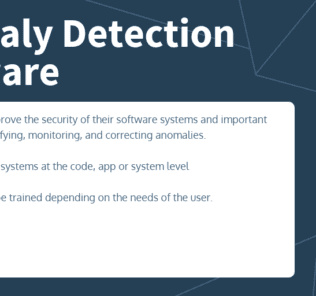
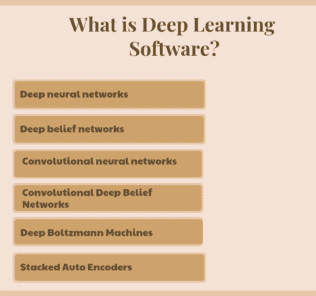

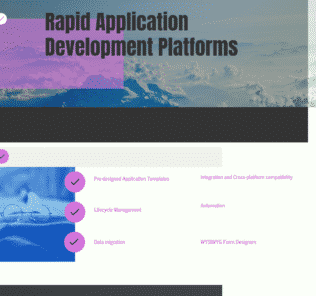
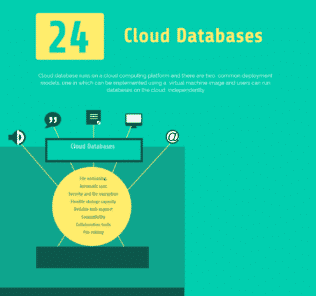
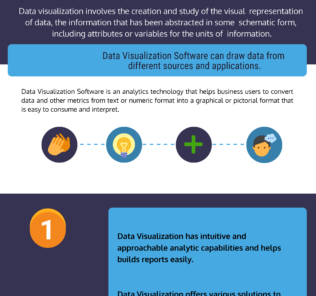




ADDITIONAL INFORMATION
I would like to suggest the low-code platform Corteza Low-Code (cortezaproject.org/technology/core/corteza-low-code/) and the version with official support, called Crust Compose. 100% open source, extremely fast, and a really nice UI 🙂
ADDITIONAL INFORMATION
Whipware, its a unified platform to build applications using different pre-built actions, and you can design your workflows graphically and its fully powered by Google Cloud platform. so its fully hosted solution and pay as you go. Using whipware I was able to build my server app with few clicks and all hosted on my own managed google cloud platform. I designed my own firebase as per my own requirements and needs so only pay as you method.
ADDITIONAL INFORMATION
Thanks for the comprehensive list. It was indeed informative.
I also came across a new platform called Pellerex (pellerex.com), it’s aim is to provide a source-included software foundation with Identity and Payment functions. Its promise is to give engineers a working base across UI, API, DevOps and Infrastructure, so they start by building on top of those functions. It is beyond a boilerplate engine, as they provide fully functional cloud-native APIs deployed on day 1. Perhaps it is worth to be added to the list.